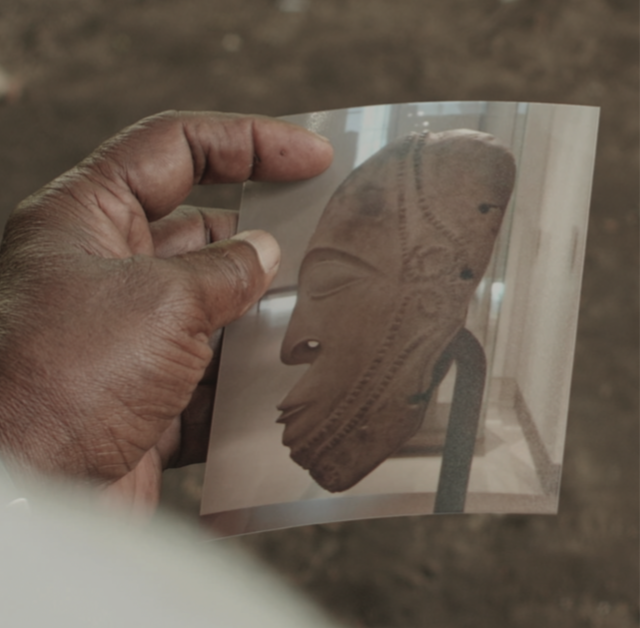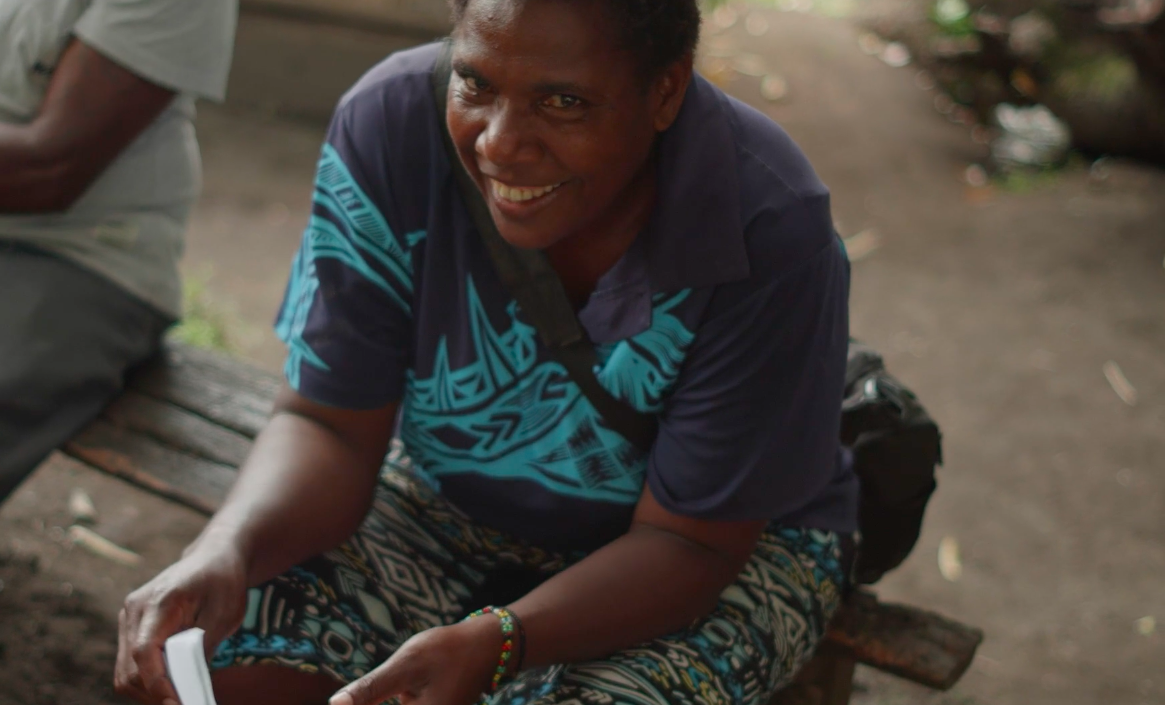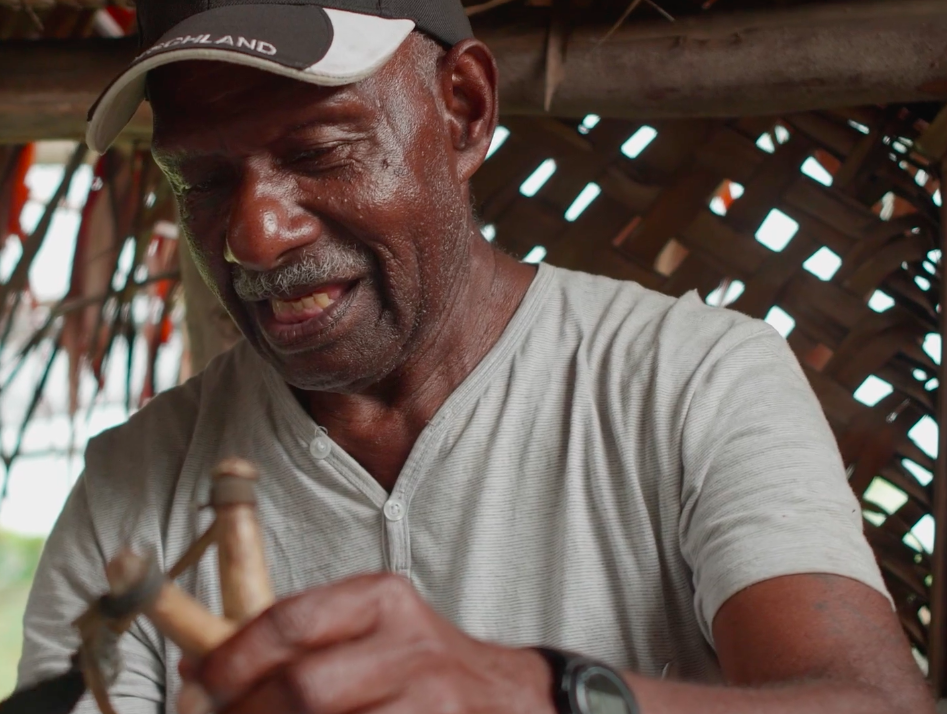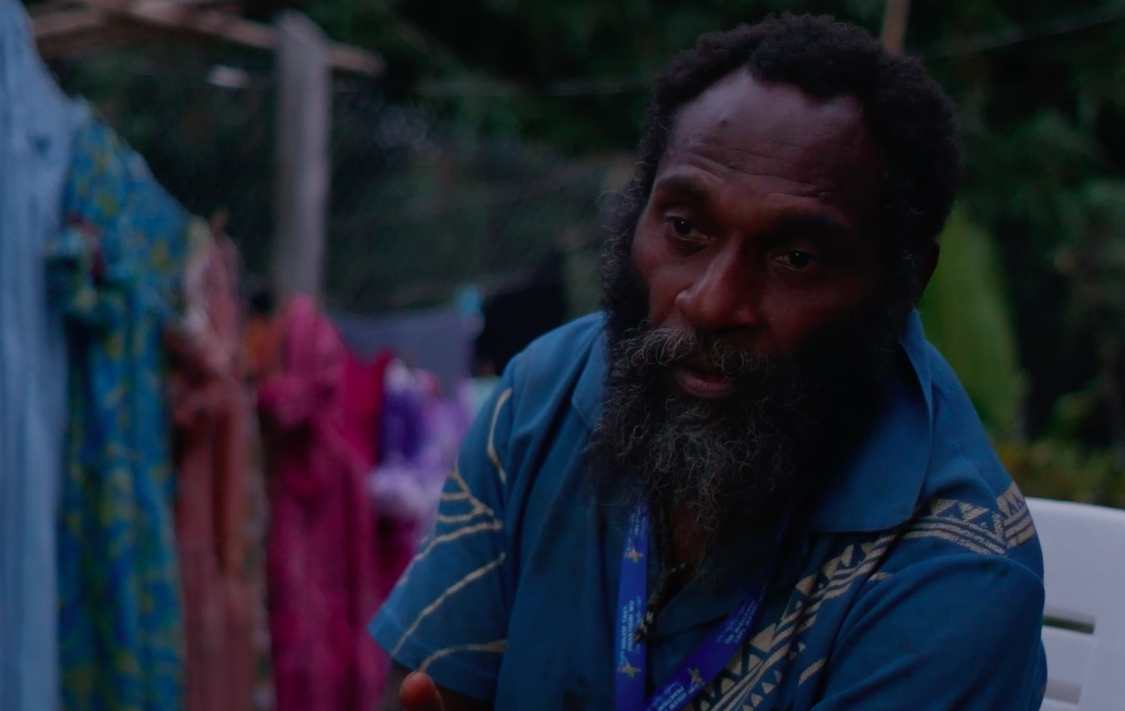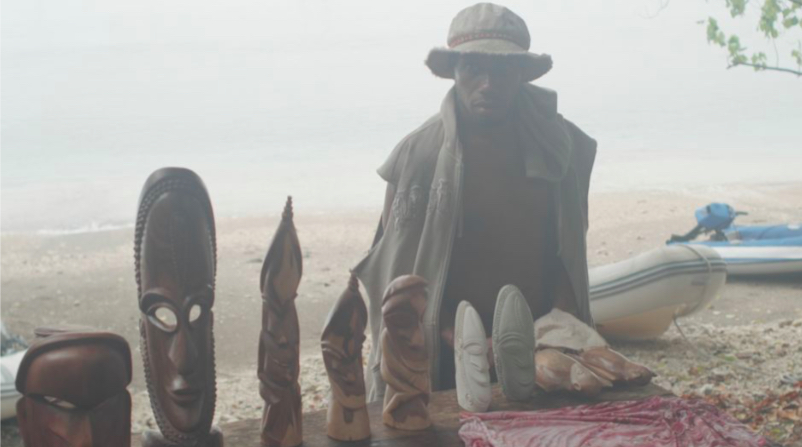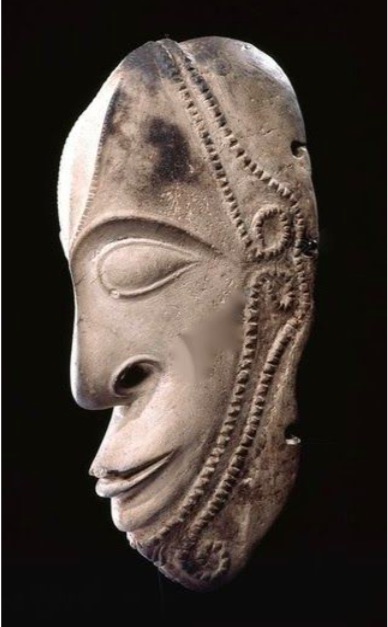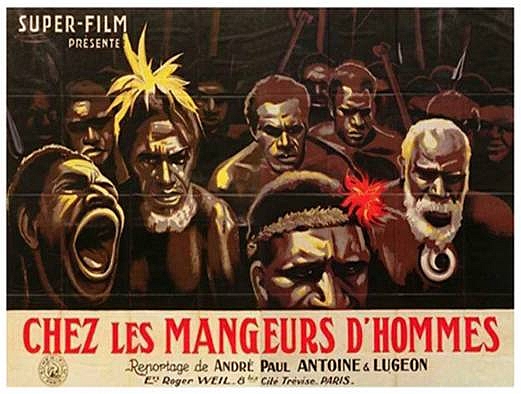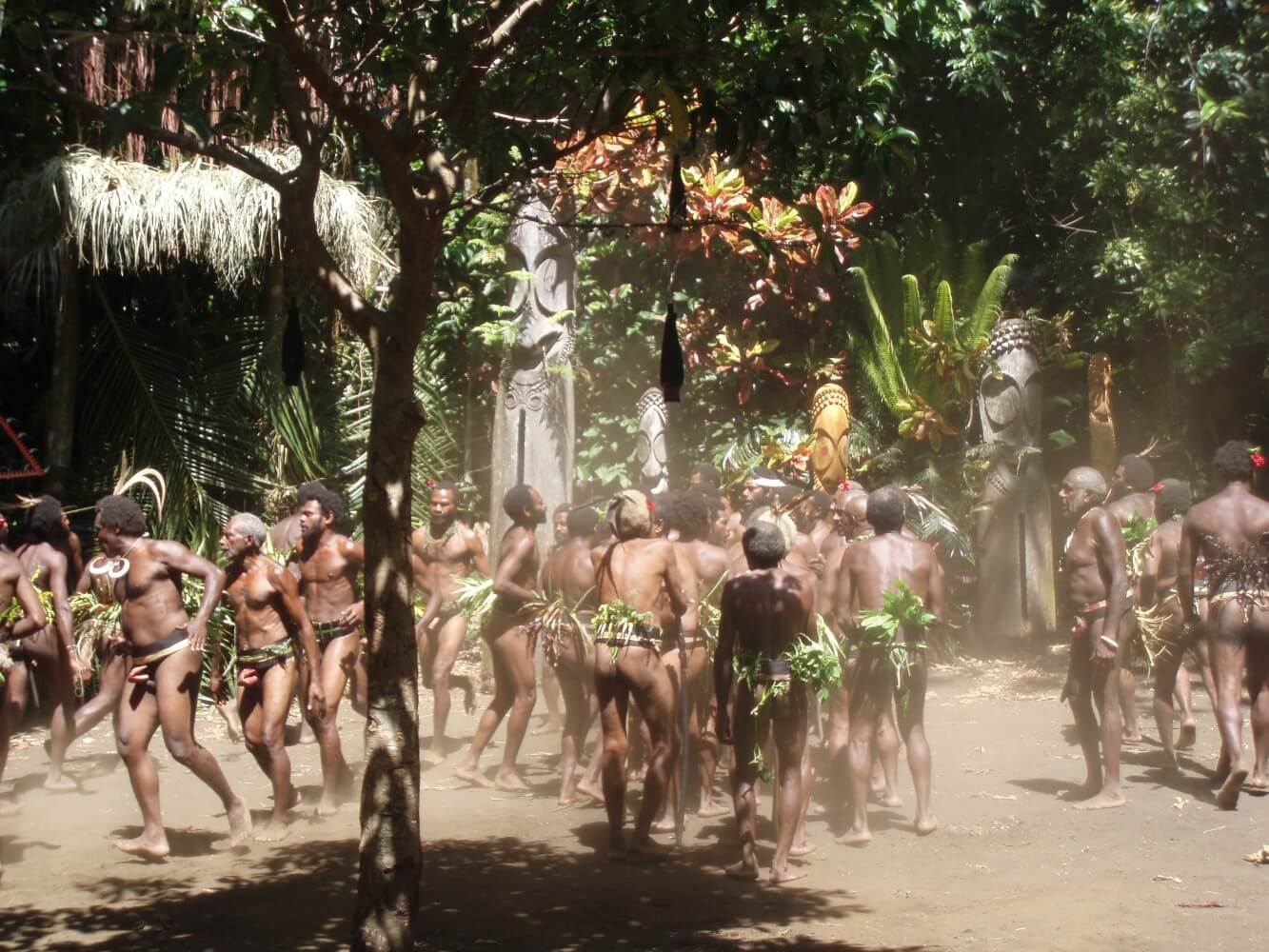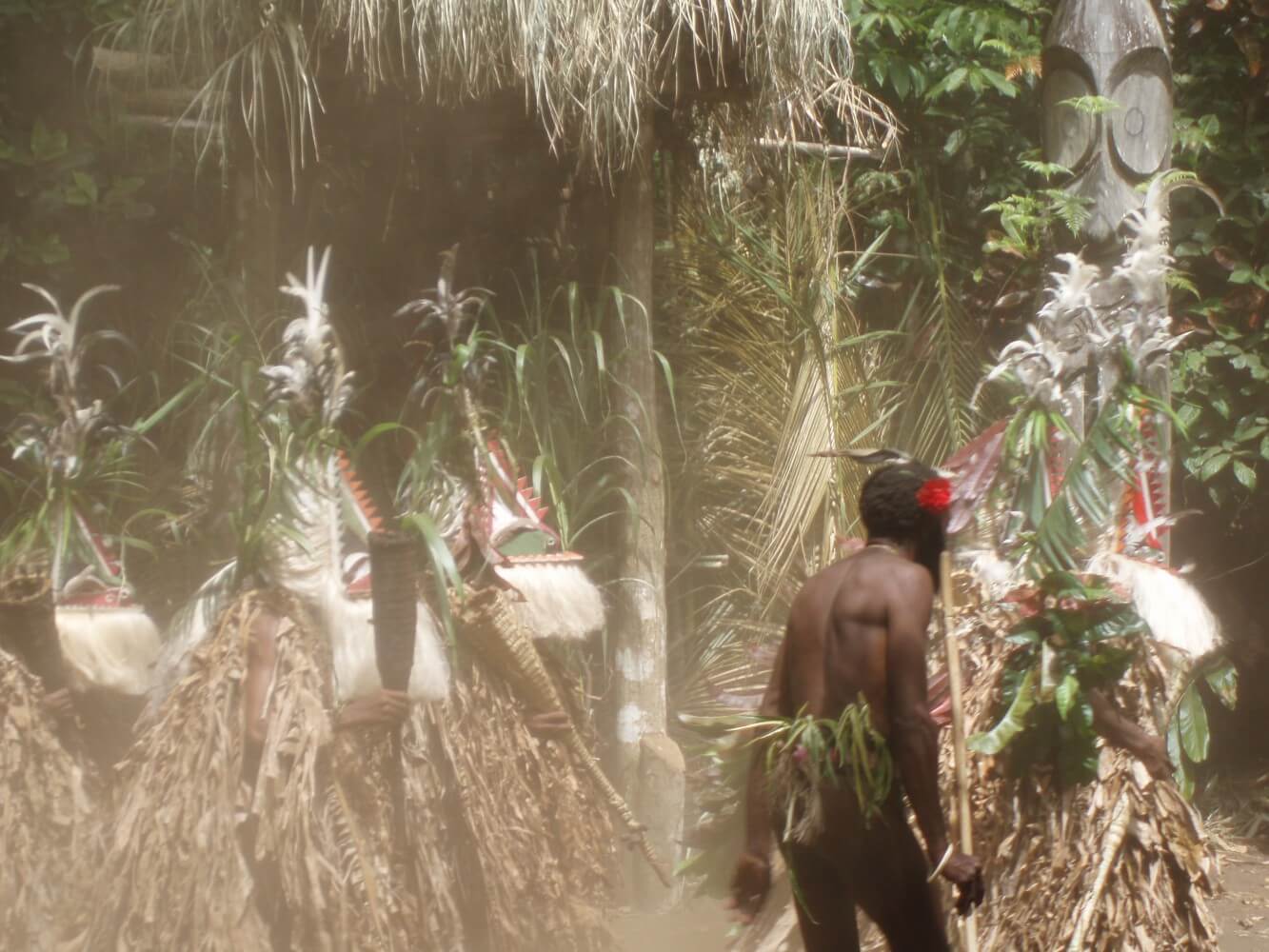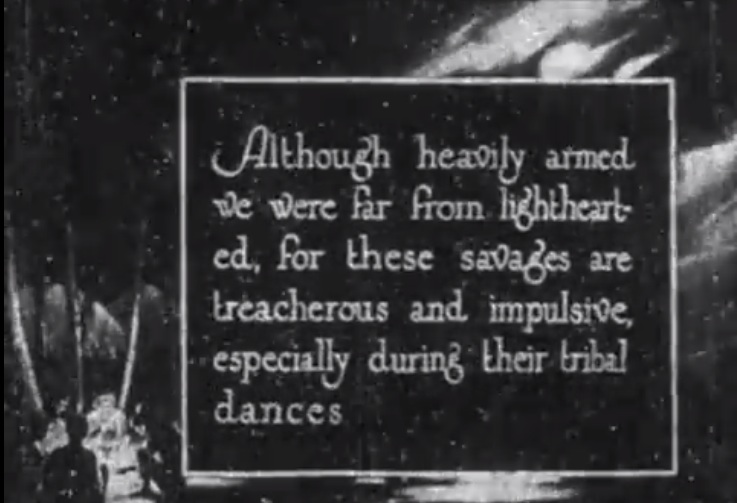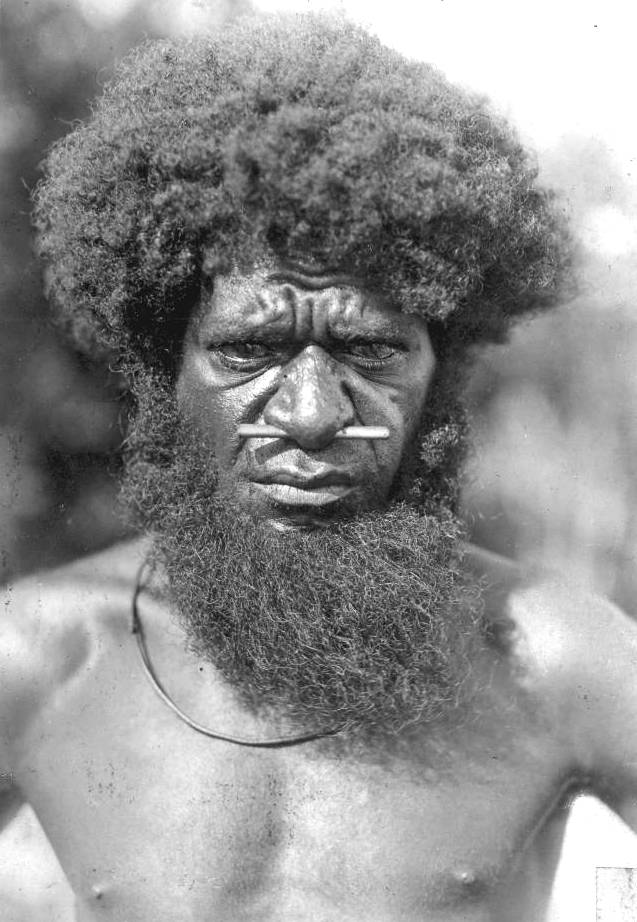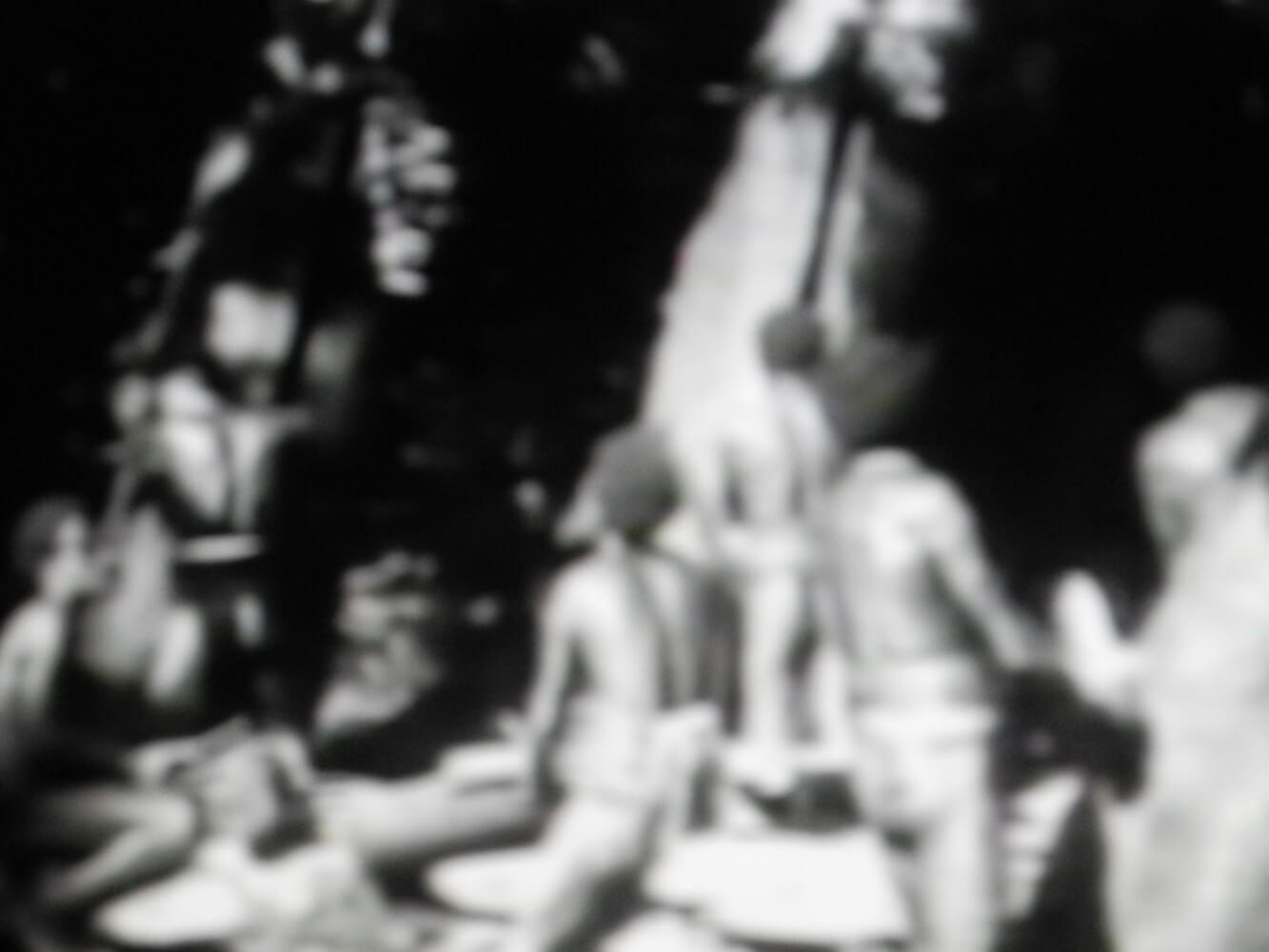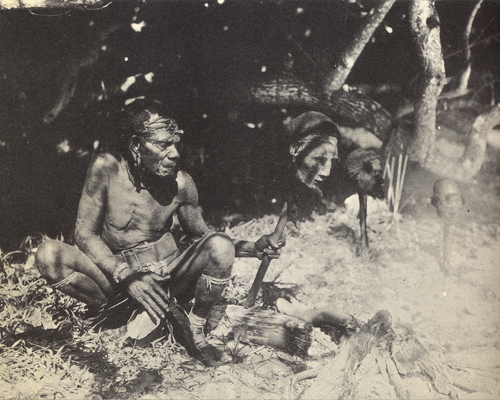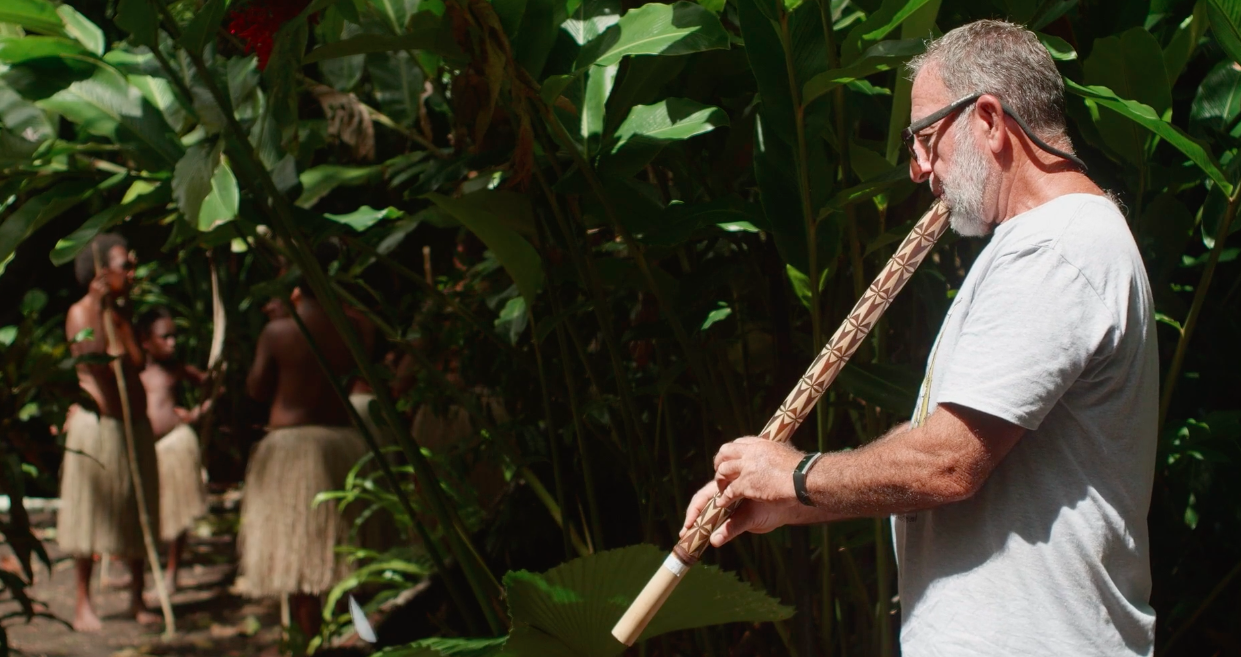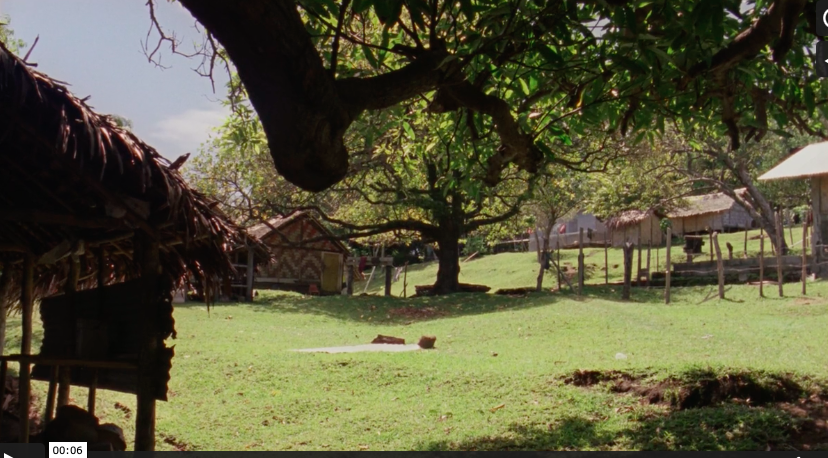Kopiraet
For centuries, Vanuatu in the South Pacific served as a projection screen for Western fantasies of the exotic. Explorers, missionaries, French and British colonizers, tourists, and film crews. They came and went, left their mark, and brought home sensational images of the other. The cannibal, the tribal, the dangerous black on heavenly white beaches. Today, this independent archipelago is in a state of transformation. Climate change, neocolonialism and digitalization clash with Vanuatu’s secluded position, its traditional economy, rituals, and magic; practices collectively called kastom.
Anthropologist Hugo DeBlock focuses in his long-term ethnographic fieldwork on the trade of art objects in and out of Vanuatu in the context of kastom, cultural revivalism and tourism. KOPIRAET is a collaboration between Hugo DeBlock and filmmaker An van. Dienderen. We film a speculative trajectory back to Vanuatu of Lengnangulong, a spiritual stone ‘collected’ in Vanuatu in 1949 and currently exhibited in the Musée Quai Branly, Paris.
We ask the help of Tarcisia, a woman from Vanuatu, who defies traditional gender roles in a male-dominated society. We follow Tarcisia in her daily activities, her concern for family and community as she works in the fields and makes kava for her family and friends. In addition to these observational scenes, we ask Tarcisia’s opinion about our images. We show her a scene with Lengnangulong. In Vanuatu, this sculpture was used during ritual performances. Using collage techniques, we construct its journey back to Vanuatu. What does Tarcisia think of this audiovisual repatriation? We also use 16mm images to suggest a disturbing form of romantic nostalgia. Furthermore, scenes of the rich history of Western films about Vanuatu from 1918 onwards are given a place in the film as historical traces of stereotypical Western imagery. Additionally we film various performances, which are differentiated as some performances are staged for tourists and/or for their own residents. All these different images will be shown to Tarcisia asking for her feedback.
KOPIRAET is a film that examines power structures and representational regimes, while at the same time, following a woman who defies patriarchal patterns. Tarcisia provides rebuttal, thoroughly scrutinizing the images shot and narratives created by us. But to what extent can this rebuttal resonate in a film primarily in Western hands. How legitimate are (Western) representational regimes in depicting lived experiences in previously colonized areas? Who is positioned to film whom? How do we deal with our privileged, Western position in approaching Tarcisia? Despite careful fieldwork, reciprocity, and ethical awareness of our power differentials, is it at all possible to go beyond the boundaries of exoticism, voyeurism, and exploitation?
KOPIRAET raises such questions, by drawing a parallel between the exploitation of the Lenglangulong in the Louvre, and our attempt to bring an image of Tarcisia to the West.


